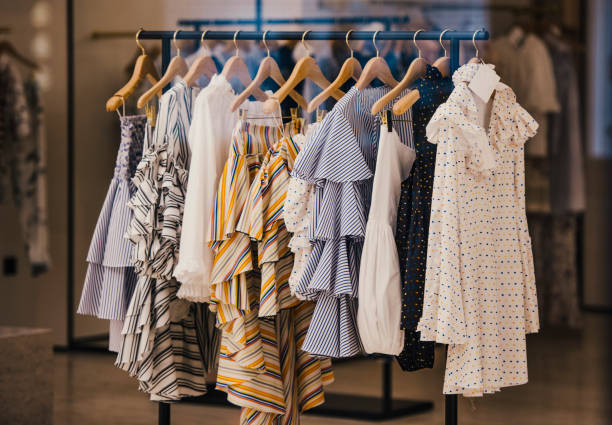The Reason Why Boutique Fashion is the Ultimate Option for Unique Design
The Reason Why Boutique Fashion is the Ultimate Option for Unique Design
Blog Article
A Deep Dive Into the World of High-Fashion Runways: Understanding Clothing as Art
Developers, much like masterful musicians, weave detailed stories via color, kind, and material, challenging conventional standards and redefining beauty criteria. As we check out these sartorial spectacles, we must consider: what role does style play in shaping social worths, and exactly how does it show the ever-changing tapestry of human feeling and identity?
The Advancement of Runway Shows
The trajectory of path shows has transformed significantly over the years, evolving from exclusive sector occasions to exciting eyeglasses that blend style with art. Typically, path shows made love events, held in ateliers or little locations, primarily attended by purchasers and industry experts. These very early discussions focused on the garments' workmanship and commercial viability, supplying a practical and direct screen of seasonal collections.
As the style industry broadened, the nature of runway programs began to change. The 1970s and 1980s noted a transforming factor, with developers seeking to differentiate themselves through even more theatrical discussions.
In the last few years, innovation and social networks have better changed runway programs, making them easily accessible to a worldwide audience. Livestreaming and digital platforms have equalized fashion, allowing lovers worldwide to witness these occasions in real-time (boutique fashion). This advancement mirrors a wider cultural shift, where high-fashion paths serve as a vibrant crossway of efficiency, advancement, and design
Designers as Dreamer Artists
Developers in the high-fashion market have blurred the lines between useful garment production and the conceptual world of art. By accepting creative techniques such as sculpture, paint, and progressive setups, designers craft garments that test typical fashion standards and raise them to art types.
Visionary designers draw motivation from a myriad of resources, including abstract art, historical recommendations, and individual narratives. They have a special capacity to picture and appear concepts that push the limits of traditional fashion, usually redefining visual standards at the same time. This creative resourcefulness is showcased via dramatic shapes, cutting-edge products, and intricate craftsmanship, which welcome visitors to experience fashion as greater than just wearable products.
Furthermore, the runway offers as a canvas for these musicians, where lighting, music, and established style coalesce to create immersive experiences. These presentations are not simply screens of garments yet are coordinated efficiencies that evoke feeling and prompt thought, attesting the designer's duty as a real musician in the modern social landscape.
Cultural Influences in Fashion
Social tapestry weaves its elaborate patterns right into the fabric of style, affecting developers globally. The vibrant interchange of social stories, practices, and icons notifies and influences collections that grace high-fashion paths.
The impact of culture on style is commonly seen in the reinterpretation of typical garments and patterns. The use of Japanese bathrobes, Indian saris, or African prints in modern style shows a mix of social authenticity and contemporary visual appeals. Designers such as Valentino's Pierpaolo Piccioli and Alexander McQueen's Sarah Burton have actually been known to incorporate abundant social motifs into their couture collections, translating history right into wearable art.

Technology in Fabric and Design
Innovation in fabric and style regularly reshapes the landscape of high-fashion, pushing limits and redefining possibilities. Over a knockout post the last few years, technical improvements have significantly added to this evolution, presenting products that challenge traditional understandings. Textiles embedded with clever fibers, efficient in transforming color or regulating temperature level, are no longer confined to the world of science fiction. Developers moved here are progressively discovering the combination of innovation, such as 3D printing, which allows for the development of complicated frameworks that were formerly unthinkable.
In addition, sustainability has actually ended up being a crucial theme in textile advancement. The garment industry is experiencing a rise in making use of eco-friendly materials, stemmed from recycled plastics, organic fibers, and even biodegradable elements. These innovations not only supply brand-new structures and looks but additionally address critical environmental issues. Designers are embracing these materials to craft garments that are both aware and aesthetically striking of their eco-friendly impact.
In terms of design, speculative types and avant-garde shapes are continuously transforming the path. By including unconventional materials and cutting-edge methods, developers grow garments that blur the line between fashion and art, setting brand-new criteria for imagination and expression in the high-fashion ball.
Influence of Style on Culture
Style possesses an extensive impact on culture, serving as both a reflection of social identification and a stimulant for social change (boutique fashion). With its development, fashion has actually mirrored societal changes, encapsulating the zeitgeist of numerous eras.
Moreover, fashion has the power to bridge cultural gaps, cultivating understanding and admiration amongst varied groups. As globalisation increases, the cross-cultural exchange of fashion concepts becomes progressively significant, advertising inclusivity and diversity. The increase of streetwear, originating from urban subcultures, highlights exactly how style can transcend socio-economic boundaries, approving people a means of self-expression and empowerment.
Essentially, style is not just regarding visual appeals; it is a vibrant pressure that affects worths, mindsets, and social progression (boutique fashion). By continually engaging with cultural and social currents, fashion remains an integral component of the cumulative human experience

Verdict
Designers, similar to visionary musicians, orchestrate collections that show identification, emotion, and social stories, testing standard looks. This crossway of style and you can look here artistry not just mesmerizes audiences worldwide but also influences societal understandings and advertises a deeper appreciation for social variety.

Social tapestry weaves its elaborate patterns into the material of style, affecting designers internationally.Style wields a profound influence on culture, offering as both a representation of social identity and a stimulant for social change.
Report this page